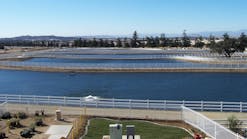New York Counties Reduce Phosphorus with Catch Basin Storm Water Insert
About the author:
Fabco Ind., www.fabco-industries.com, 631.393.6024
The East of Hudson Watershed Corp. is a development corporation established by the municipalities in northern Westchester, Putnam and Dutchess counties in the New York City Watershed to install storm water retrofit projects to meet requirements for phosphorus reduction defined by the New York State Department of Environmental Conservation (NYSDEC). The EOHWC was tasked with stabilizing four eroded channels, which discharged runoff from the Brewster Heights subdivision. These channels had caused washout and sediment deposition onto private property and into the New York City water supply. Identifying a water quality best management practice to implement proved challenging. The existing phosphorus load of the drainage area tributary to the stabilized channels was calculated as 22.46 kilogram per year. The reduction credit, which was attainable through installation of two HDS units, would have been 2.25 kilogram per year. Enter Fabco Industries and the StormBasin solution. Fabco’s StormBasin had already been approved by the NYSDEC for 50% phosphorus removal for EOHWC projects and had the advantage of being retrofitted into existing catch basins.
The NYSDEC’s approval was based on the submittal prepared by Woodard & Curran, as part of the overall EOHWC Coalition Stormwater Retrofit Plan. Woodard & Curran believed that for the overall phosphorus reduction program to be successful, the regulated municipalities needed cost-effective, easy-to-implement storm water retrofit treatment solutions that also required minimal O&M. Woodard & Curran chose the StormBasin Solution with Fabphos filtration media. Treating a portion of the drainage area, the StormBasin inserts were able to obtain a reduction of 7.43 kilogram per year at both a lower cost than anticipated and with no required realignment of existing utilities.
“The largest impact we have seen is in how quickly the StormBasin collects the sediment and debris that had previously reached the storm water drainage system," said Kevin Fitzpatrick, PE, EOHWC’s director of engineering. "By catching the storm water flow from the source, we’re able to remove the debris and pollutants before it reaches our stabilized drainage path. This project involved the collaboration of multiple parties. The Fabco installation was a successful piece of a much larger effort to protect the water quality of the New York City drinking water supply.”







